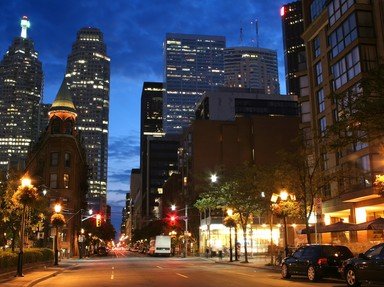Quiz Answer Key and Fun Facts
1. Named after a town in Middlesex, England.
2. Named for the reigning British monarch.
3. Named after the Duke of York and Albany.
4. An Inuktitut word meaning "place of many fish."
5. Derived from Algonquin word meaning "to trade."
6. Named after the cousin of Jesus Christ.
7. Derived from Cree word meaning "muddy water."
8. A description of the foam in a local river's rapids.
9. Derived from Mohawk word meaning "where there are trees in water."
10. Named for the reigning British monarch's royal consort.
11. Named for George Montagu-Dunk, the 2nd Earl of __________.
12. Named by the Duchess of Argyll in honour of her mother.
13. Named after the local Dene tribe.
14. Derived from Algonquin word meaning "where the river narrows."
Source: Author
reedy
This quiz was reviewed by FunTrivia editor
agony before going online.
Any errors found in FunTrivia content are routinely corrected through our feedback system.
